#british mythology
Text
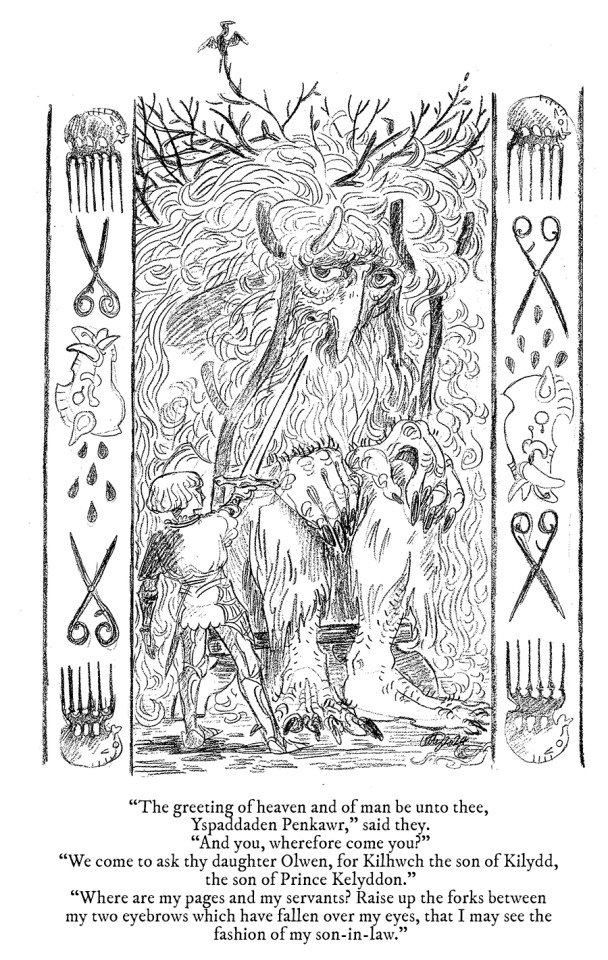
Doing a lazier version of @mortiscausa's fantastic arthurian drawing challenge! I'm using the prompts to inspire some pencil drawings based on the Mabinogion's tale of Kilwhch and Olwen (which in turn is the basis for a book I'm working on). First up, "Quest."
(edit: reuploaded the image without embarrasing typos oops!)
#arthuriana#folklore#drawing challenge#illustration#fairytale#giant#knight#legend#myth#british mythology#welsh#welsh folklore
194 notes
·
View notes
Text

The Tangi [Scottish, Shetland folklore]
There are lots of folktales about supernatural horses that live underwater and entice people into mounting them. Once the victim does so, they find themselves unable to dismount and the horse takes its prey underwater to drown them. The most famous of these creatures are the Scottish Kelpie and the Welsh Ceffyl Dŵr, though there are lots of similar aquatic horse monsters from British, Germanic and Scandinavian folktales. They are related and come from the same root story.
In the Shetland Islands, however, there are two such creatures, and while they are undeniably similar, surprisingly they are said to be two distinct kinds of beings that exist in different habitats. The Njuggel (or ‘Shoopiltee’ in Northern Shetland, among other names) resides in lakes and other fresh bodies of water, whereas the Tangi (also Tangie) is a marine monster. Keep in mind however that this distinction is not set in stone (folklore is hardly an exact science, of course) and in some places the Njuggel and the Tangi are considered to be synonyms.
In the Orkney islands of northern Scotland, the Tangie would appear either as an old human covered in seaweed (true to its name, as the name ‘Tangie’ is likely derived from ‘tang’ which is a local term for seaweed) or as an aquatic horse. This Tangie would jump out at unwary travelers, and it took a particular liking to young women, kidnapping them from the banks of the Scottish lakes and dragging them into the depths to be devoured.
In places where the two are said to be separate monsters, the following distinction is usually made: a Njuggel appears as a white or grey horse with a wheel for a tail that drowns its victims in lakes. A Tangi, on the other hand, is black or dark grey and has no wheel. Tangis are shapeshifting creatures and sometimes appear as cows, other animals, or as humans. When taking the form of a human, a Tangi usually chooses to appear as a handsome young man and seeks out girls to seduce and have sex with. Sometimes they go the extra mile and abduct a girl to marry her. Being associated with the sea, they commonly haunt shores but these creatures make their homes in seaside caverns.
Like its cousin the Njuggel, a Tangi is engulfed in a blue flame when galloping at high speed. Sailors sometimes claimed to have seen one of these creatures as a distant blue flash that raced across the shore.
One old account of these creatures also claimed that they have wings and the uncanny ability to locate any object that fell or was thrown into the ocean, regardless of depth. These claims are not backed by any other sources. However, they do have an important trait that sets them apart from Kelpies, Njuggels, Nixen and the like.
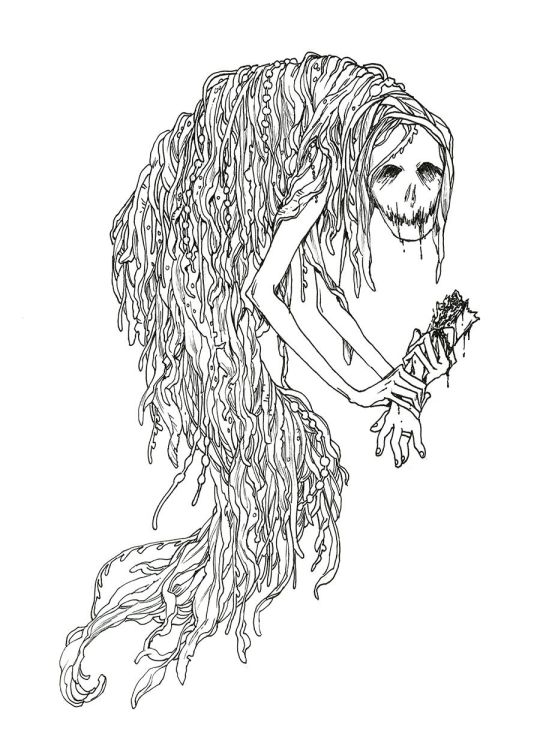
Whereas most Kelpie-like monsters are said to make people mount them and then drown their victims, the Tangi does not need to be mounted. It can cast a spell on its victims by galloping in circles around them. When under the influence of the Tangi’s magic, the victim becomes hypnotized and immediately tries to drown themselves, usually by jumping off a cliff into the ocean. Those who survive find themselves in a dazed state which lasts for a few days at most.
They are not invincible however and share the same weaknesses as the Njuggels: they are afraid of fire, can be injured with iron and lose their power if you utter their name. For example, one story tells of a man who encountered a Tangi. The black horse started running in circles around him but he managed to stab it with an iron knife. The creature ran away and disappeared.
Sources:
Teit, J. A., 1918, Water-beings in Shetlandic Folk-Lore, as Remembered by Shetlanders in British Columbia, The Journal of American Folklore, 31(120), p.180-201.
Lecouteux, C., 2016, Encyclopedia of Norse and Germanic Folklore, Mythology, and Magic.
Monaghan, P., 2004, The Encyclopedia of Celtic Mythology and Folklore, Facts on File Library of Religion and Mythology, 512 pp.
Pérez-Lloréns et al., 2020, Seaweeds in mythology, folklore, poetry and life, Journal of Applied Phycology, 32, 3157-3182.
(image source 1: orig03 on Deviantart. The image actually depicts a black Kelpie, but I figured it’s fine since the Tangi is related and similar)
(image source 2: unknown, sorry)
#Scottish mythology#British mythology#aquatic creatures#monsters#Kelpie#mythical creatures#fey#bestiary
75 notes
·
View notes
Text

"The Lord of Wild Things"
#Cernunnos#mythological creature#antlers#celtic mythology#muscular definition#supernatural#ai men#ai artwork#ai generated#ai art community#gay ai art#ai gay#art direction#bearded man#magical creatures#nature spirits#male pinup#beefcake pinup#british mythology#body art#horned god#ritual magic#ceremonial magic#druid
24 notes
·
View notes
Photo
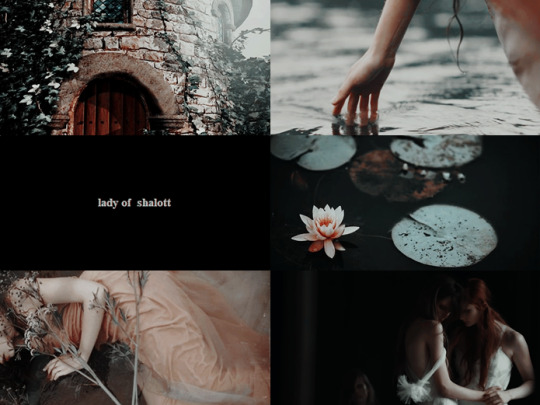

f/f february: the lady of shalott & the lady of the lake
requested by anon
#the lady of shalott#the lady of the lake#arthurian mythology#british mythology#mythedit#*#mine#myth*#fffeb#ffmyth
195 notes
·
View notes
Text

I took permission from @lisadelise to add black shuck in my story/novel, Because she added it first to her OC Eliena, I made a design of my own of the black shuck, Because I like new and unique things. Also, to avoid called ‘copycat’ or ‘idea stealer’. Most arts of The Black Shuck either have one red eye or two red eyes I decided to give it a 3 eyes, His top eye have heat vision just like Superman’s, I forgot to say that The Black Shuck in my novel/story is good fella but his looks doesn’t help at all, He doesn’t attack humans because he doesn’t see the most of them as ‘evil’ or a ‘threat’ unlike the usual black shucks who are pure monsters and hellish creatures who lives on blood. That is all 😁😁😁.
#Roselyn artwork#Roselyn said#Roselyn spoke#cryptid art#cryptidcore#cryptozoology#cryptids#Black Shuck#HellHound#Mythologies#British mythology#urban legends#urban myths#announcements#horror art#tw: blood#horror#blood#gore#cw blood#mythology#Britain mythology#artists of tumblr#artists on tumblr#colored pencil#female artists#traditinal art#traditional artist
14 notes
·
View notes
Photo
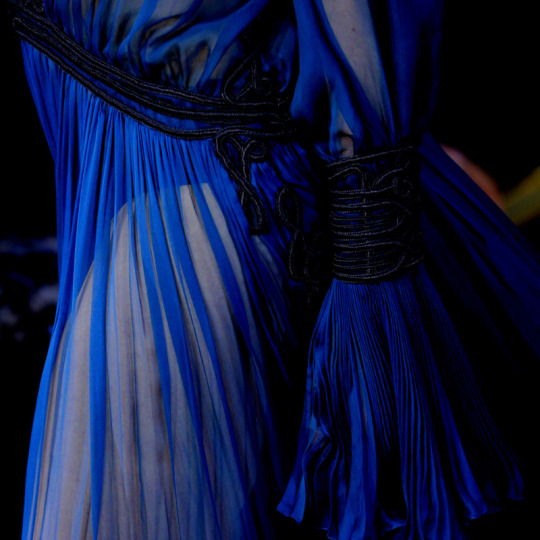
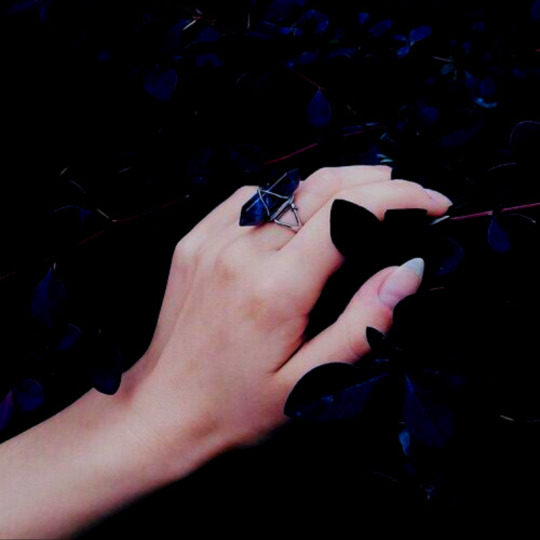



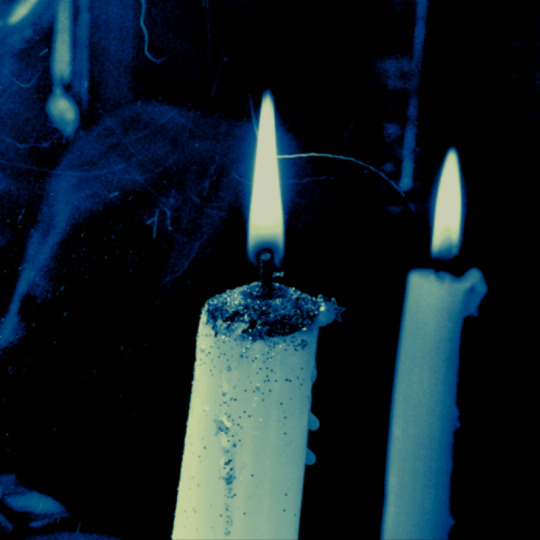


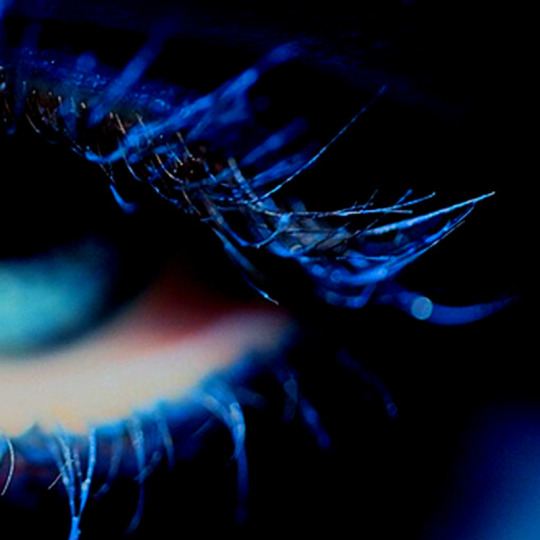
30 days of horror: black annis
black annis is imagined as a blue-faced hag or witch with iron claws and a taste for human flesh (especially children). she is said to haunt the countryside of leicestershire, living in a cave in the dane hills with a great oak tree at the entrance. she is said to venture out at night looking for unsuspecting children and lambs to eat, then tanning their skins by hanging them on a tree before wearing them around her waist.
293 notes
·
View notes
Quote
In the wonderful book The Once and Future King by T. H. White, the wizard Merlin instructs the young king Arthur: “The best thing for being sad…is to learn something. That's the only thing that never fails. You may grow old and trembling in your anatomies, you may lie awake at night listening to the disorder of your veins, you may miss your only love, you may see the world about you devastated by evil lunatics, or know your honour trampled in the sewers of baser minds. There is only one thing for it then — to learn. Learn why the world wags and what wags it. That is the only thing which the mind can never exhaust, never alienate, never be tortured by, never fear or distrust, and never dream of regretting. Learning is the only thing for you. Look what a lot of things there are to learn.”
Sophie Strand, from “The Birth of The Flowering Wand | A Year of Otherness”
65 notes
·
View notes
Text
Notes from Ronald Hutton's lecture "Finding Lost Gods in Wales" from Gresham College
A major problem for locating Welsh paganism in historical terms is that there really is very little source material to work with, certainly not much medieval literature seems to have survived in Wales, at least when compared to other countries such as Ireland and Iceland. It was thought that several Welsh stories and poems reflected the presence of an ancient Druidic religion and thereby some form of paganism, but this idea has since been rejected. It is now believed these stories and poems originated much later, possibly dating to around 500 years after "the triumph of Christianity". Only four manuscripts written in the 13th and 14th centuries might contain some possible relevance to paganism. Hutton tells us that these are The Black Book of Carmarthen, The White Book of Rhydderch, The Red Book of Hergest, and The Book of Taleisin (so-called). About 11 stories from the White Book and Red Book were compiled into what was called The Mabinogion in the 1840s. None of these are stories are certain to be older than the 12th century, although the oldest stories in the Four Branches of the Mabinogion may have been written as far back as 1093, and according to Hutton some of the stories of the Mabinogion were actually inspired by foreign literature, including not only French troubadour stories but also Egyptian, Arabic, and Indian stories that were brought to Europe.
Hutton notes that, unlike in medieval Irish and Scandinavian literature, the stories of the Mabinogion don't seem to feature any gods or goddesses or their worshippers (at least not explicitly anyway), despite being set in pre-Christian times. Many characters have superhuman abilities, but it's apparently not clear if these are meant to be understood as gods, or magicians, or just narrative superhumans. If there are pagan survivals in these stories, it may be the presence of an otherworld realm called Annwn, often equated with the underworld, and/or the presence of shapeshifting abilities (and on this point I believe Kadmus Herschel makes a convincing point in True to the Earth about this being reflective of a non-essentialist pagan worldview). Of course, Hutton believes that these are generalized themes and no longer linked to paganism in themselves, but of course I'd say there's room for skepticism here (I'm not exactly picturing a Christian Annwn here).
An important figure within the Four Branches of the Mabinogion is Rhiannon, a woman from Annwn who often believed to be a surviving Welsh goddess or survival of the Gallo-Roman goddess Epona. Her marrying two successive human princes has been interpreted as signifying Rhiannon as a goddess of sovereignty. Hutton argues that this is not certain because Rhiannon does not confer kingdoms to her husbands, there is no clear sign of a sovereignty goddess outside of Ireland or British horse goddesses in Iron Age archaeology or Romano-British inscriptions. Hutton argues that it's more likely that Rhiannon was a member of human royalty or nobility rather than a goddess. Of course, this is perhaps a zone of contestation. Hutton does not deny the possibility that Rhiannon was a goddess, but believes that the decisive evidence is lacking. For what it's worth, Rhiannon is a unique figure in the literature of the time, as a being from the otherworld who chooses live in the human world and willing to stay there even after every misfortune or crisis she encounters, responding to every problem with an indomitable and perhaps "stoical" willpower and courage.
The mystical poems, or the court poets from 900-1300, are also thought to contain some aspect of lost Welsh paganism. These were to be understood as a kind of artistic elite that delighted in prose that was sophisticated to the point of being almost beyond comprehension. They apparently believed that bards were semi-divine figures, permeated by a concept of divine inspiration referred to as "awen". They drew on many sources, including Irish, Greek, Roman, and even Christian literature, but also apparently the earlier Welsh bards. Seven mystical poems are credited to Taliesin, and these could be dated any time between 900 and 1250, though contemporary scholars typically favour 1150-1250 as the likely timeframe. Despite probably being written at a time when Wales was likely already Christianized, the poems are repeatedly referred to as sources of paganism and ancient wisdom by modern commentators.
The poem Preiddeu Annwn is one "classic" example. It is the story of an expedition into the realm of Annwn, which is undertaken to bring back a magical cauldron. The poem that we have seems to be explicitly Christian, but it is often believed that this is merely a Christian adaptation of an older pre-Christian text. But apparently no one really knows the real meaning of the Preiddeu Annwn, not least because no one can agree on what a third of the actual words in the poem mean. No one really knows if Taliesin was demonstrating a certain knowledge that only he possessed or what, if anything, he was referencing, so in a way we just don't "get" his poem.
Over the years the court bards ostensibly developed a new cast of mythological characters, or simply an enhanced an older cast of characters, to the point that they seem superhuman or even divine, yet just as medieval as King Arthur or Robin Hood. One example of this is Ceridwen, a sorceress who first appears in the Hanes Taliesin. Court poets apparently interpreted her as the brewer of the cauldrons of inspiration, and eventually the muse of the bards and giver of power and the laws of poetry. In 1809 she was called the "Great Goddess of Britain" by a clergyman named Edward Davies, which has been taken up by many since. Then there's Gwyn ap Nudd, who appears in 11th and 12th century texts as a warrior under the command of King Arthur. In 14th century poetry he seems to have been interpreted as a spirit of darkness, enchantment, and deception, and in the 1880s professor John Rhys identified him as a Celtic deity. Another major character is Arianhrod, who first appears in the Fourth Branch of the Mabinogion as a powerful enchantress whose curses were unbreakable. Over time it was also believed that she could cast rainbows around the court, the constellation Corona Borealis was dubbed "the Court of Arianrhod", and somehow since the 20th century she was identified as an astral goddess.
Then we get to the canon known as "Arthurian legends": that is, the stories of King Arthur. Hutton says that these tales originated as stories of Welsh heroes who fought the English, and these stories also contained what are thought to be residual pagan motifs. One example is the gift of Excalibur from the Lady of the Lake, which is either based on memories of an older pre-Christian custom of throwing swords into lakes, the rediscovery of an older custom through finds, or even a persisting medieval custom of throwing a knight's weapons into a water. The Dolorous Blow which strikes the maimed king and turns his kingdom into a wasteland is thought to suggest a residual belief in the link between the health of a king and the health of a land, though the blow itself is inflicted by a Christian sacred object. The Holy Grail is often believed to derive from a pre-Christian sacred cauldron, but it was originally just a serving dish before becoming a Christian chalice.
And of course, there's Glastonbury, featuring as the Isle of Avalon, the refuge and possible burial site of Arthur. It has been thought since at least the 20th century that Glastonbury was a centre of paganism, but no remains have been found there which might suggest the presence of a pagan reigious site. And yet, in 2004, some prehistoric Neolithic post-holes were discovered near the Chalice Well garden in Glastonbury after the Chalice Well house started a kitchen extension. Although no deposits were found that suggest anything about the religious life of the area, the point stands that it was the first trace of anything Neolithic at Glastonbury. But there is perhaps always more to be found. As Hutton says, there are always new kitchen extensions, garden developments, street work, or any other renovation that might result in archaeological excavations, and we could find almost anything at any time. For my money, if there's hope anywhere, it's in that. Almost makes me want to get back into my childhood metal detecting hobby. It would certainly have a purpose: to rediscover anything from our pre-Christian past that could possibly be found.
From the Q&A we can incidentally note that many contemporary artefacts of Welsh national/cultural identity are very modern, they have nothing to do with some ancient past, but they weren't always to do with the romantic nationalism of Iolo Morganwg. The daffodil, for example, was probably first taken up as symbol of Wales in 1911, during the investiture of the then Prince of Wales. The leek, on the other hand, seems to have been symbolically associated with Wales since the Middle Ages, possibly as a reference to St David as his favorite dish, or possibly as a less then flattering reference to Welsh agriculture. The dragon, or rather Y Ddraig Goch (literally "the red dragon") as it is called here, dates back to a medieval narrative about a tyrannical king named Vortigern. He tries to build a castle but it repeatedly collapses, and according to the legend that's because two dragons, one red and the other white, are always fighting beneath the ground. The white dragon is supposed to represent the English and/or the Saxons, while the red dragon represents the Welsh and/or Celtic Britons. Although traditionally, at that time, Welsh princes took up the lion as their symbol much like English and other European royalty did, the Tudors established the red dragon as an official heraldic symbol of Wales to distinguish from English iconography, and that has been a mainstay of Welsh culture ever since. All-in-all, however, probably nothing to do with paganism here, unless the dragon has some older significance that we don't know about (and I'm inclined to be charitable here, considering that dragons in Christian symbolism usually represent Satan and/or evil).
There is the suggestion that Arianrhod is to be identified with Ariadne, the Cretan princess who became the lover and consort of the Greek god Dionysus. Both Ariadne and Arianrhod are associated with the Corona Borealis, which in Greek myth was a diadem given to Ariadne as a wedding present from Aphrodite. But that's about it. Any identification based solely on that would be a stretch.
There is the discussion of the legend of Bran, or Bran the Blessed, a king of Britain whose head was said to be buried in a part of London where the White Tower now stands. Hutton says it's possible that this may have reflected an ancient pre-Christian custom of burying parts of "special" people in "special" places to give them enduring magical/divine power, or alternatively that it references a Christian tradition of similarly venerating the relics of saints (itself possibly adapted from pre-Christian traditions in the Mediterranean, but that's another story; any input on that subject though would be much appreciated!). Hutton suggests that Bran's head being specifically buried beneath The White Tower is one of the best indications that the Four Branches of the Mabinogion as we know them were composed no earlier than the early 12th century, because the White Tower was built by William the Conqueror in 1080, and the Norman occupation in Wales as well as England at the time was part of the backdrop of the writing of the Four Branches. Hutton also suggests that stories concern parables from a distant, lost ancient time that were marshalled by Welsh poets who applied them as lessons for how to survive in the present, against the threat of Norman occupation. I should like to have answers on that front, because something about the reactivation of a distant past against the present order resonates very well with Claudio Kulesko's concept of Gothic Insurrection. It makes for interesting horizons, especially when applied to radical political dimensions relevant to things like the question of political identity in the context of the British union.
Relating to the legend of Wearyall Hill, the place in Glastonbury where Joseph of Arimathea supposedly planted the "holy thorn", there is the point made by the late historian Geoffrey Ashe (who, incidentally, died in Glastonbury) that none of the legends concerning Glastonbury have been or even can be disproved, which means that they all just might be correct. Hutton seems inclined to take what could be described as the "glass half full" side of that problematic, in that he thinks the great thing about myths and legends is that there also the possibility that there's something to them. I think that this presents possibilities for paganism, but in the sense that we are to look at it as an act of assemblage, or rather re-assemblage, and in a sense it works to the precise extent that we take it as medieval and contemporary mythology, without at the same time believing the lies that we tell ourselves through our romance and mythology.
Then there's the subject of the demonization of Gwyn ap Nudd in the Buchedd Collen, which incidentally counts as yet another Glastonbury legend. Hutton says that there is no doubt that Gwyn ap Nudd was demonized by Christians, but says that this was not specifically the work of the St. Collen myth. The legend of St. Collen was already fairly well-established in the Middle Ages, and the Welsh town of Llangollen takes its name from St. Collen. The legend goes that Collen was preaching in Glastonbury when Gwyn ap Nudd had taken over the Glastonbury Tor (Ynys Wydryn) and set up a mansion from which to tempt and seduce the inhabitants with vices and pleasures. Collen then goes to Gwyn ap Nudd's mansion and sprinkles holy water everywhere, causing it to explode and leave nothing but green mounds. Hutton suggests that by the 14th century Gwyn ap Nudd was already interpreted as a demon, but we don't really know how or why that happened. Here a horizon of assemblage emerges from the context of Christian demonization.
Gwyn ap Nudd, if taken as a Welsh or Brythonic deity, is interesting to consider as a demon invading Glastonbury and being exorcised by a Christian monk with holy water. There's an obvious question, albeit one that may have no answer: why does Gwyn appear as the subject of an exorcism myth in the context of a Christianized society? It seems plausible to consider Christians interpreted Gwyn ap Nudd as a demon by way of his already being the ruler of Annwn, an otherworld realm then recast as Hell. It may also be possible that Gwyn was a persistent reminder of an older pre-Christian polytheism, even if it's unlikely that he was actually worshipped by anyone living in the Middle Ages. Everything sort of hinges on the fact that the figure of Gwyn ap Nudd was pre-eminent enough in medieval culture, and enough of a thorn on the side of the Christian imaginary, to first of all be recast as an evil demon and then become the central antagonist of the legend of a Christian saint who exorcises him. That might allow Gwyn's presence in the legend to be interpreted as symbolic of the pre-Christian past, albeit through Christian eyes, and a figure who could represent its potential reactivation in Wales.
Lastly, there's the matter of apparent similarity between Welsh and Irish mythology, and the idea of a shared "Celtic origin" between them, in which we are again at a crossroads of possibility. That whole connection comes with a problem: there are definitely similarities between the Irish and Welsh characters at least in name, but these characters also to tend to share names more than they share almost anything else. The two explanations are either that these characters were deities that were worshipped in pre-Christian Wales as well as Ireland, or that Welsh authors were just well-acquainted with Irish folklore and literature and simply borrowed ideas from there. Hutton suggests that the first explanation may not be entirely wrong, or at least not completely invalidated, and leaves it up to the individual to decide between the two possibilities. It is very difficult to be certain is the first possibility holds up, and I have the suspicion it might not, at least not sufficiently. But it doesn't seem totally impossible, given the resonances between the mythical figures in Wales vs the pre-Christian gods of other lands. A relevant example would be Nudd, or Lludd Llaw Eraint, the mythical hero whose name was cognate with the Irish Nuada Airgetlam and apparently derived from the name of the ancient god Nodens. Not to mention Lleu Llaw Gyffes coming from the name of the Celtic god Lugus. That presents the slim possibility of connection, and perhaps assemblage by way of Irish myth.
If you want to see the full thing I'll link it below, here:
youtube
#wales#welsh paganism#britain#celtic polytheism#welsh literature#medieval literature#paganism#brythonic polytheism#glastonbury#arthurian legend#mabinogion#welsh mythology#british mythology#celtic mythology#gothic insurrection#Youtube
44 notes
·
View notes
Text
Here’s a creature for Librum Prodigiosum ! The Dunnie, from British mythology! Specifically tales come from Scotland and Northern England- it can appear in a field as a handsome plough-horse who disappears once the farmer has let it in the stalls! Thus these creatures are considered pranksters by some!

#digital art#fantasy#folklore#mythical creatures#british mythology#scottish mythology#dunnie#shire horse#work horse#horse art#Librum Prodigiosum#mythologyart
81 notes
·
View notes
Text
Do you have an idea what the best thing about all this is?
That Sirius Black's animagus form is based on a SPECIFIC dog: Grim, Cadejo, Dip o just... black dog. An entity from British mythology.

Completely illustrative image taken from Wikipedia (shitpedia).
Do you know what's bad about all this?
Which for convenience says that Crookshanks is the Animagus form of Regulus Black when there is also a cat-like entity in British mythology: the Cait Sídhe.
"...it is all black with the exception of a white spot on the chest. It is described as: 'being as big as a dog'..."
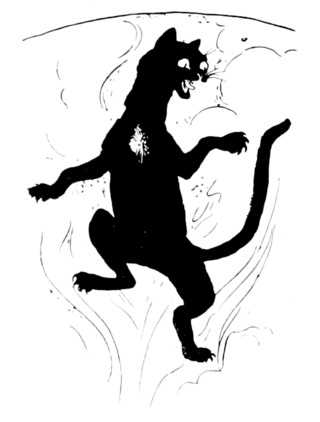
Completely illustrative image taken from Wikipedia (shitpedia).
I have nothing against those who use Crookshanks as Regulus Black's Animagus form... I personally like this idea better.
Maybe it's just my unusual taste for making the Black brothers as equal as they are different.
Maybe it's a good idea but the majority of the fandom was unaware of these entities -especially the second one- because they are not typical of their place of origin.
Maybe I should stop writing right now and just post this.
Hello! I went to edit the post because I don't want misunderstandings about my words.
The word "British" is used for any situation or characteristic that is related to the islands of Great Britain (say the United Kingdom, Scotland, Wales and Northern Ireland).
That is why I took the liberty of not putting "Scottish and Irish mythology" in the Cait Sídhe section (being that it is a legend typical of those nations).
That is all for now.
Have a nice day.
#harry potter#regulus black#sirius black#the marauders era#british mythology#brothers black#the noble house of black#the noble and most ancient house of black
2 notes
·
View notes
Text

The Lady of Shalott by British Artist John William Waterhouse. 1888
4 notes
·
View notes
Photo

My first children’s short story is up on Kindle. It’s a fantasy story inspired by British Mythology and old fairy tales. I can’t seem to get a link working do type the title or my name into amazon to find it.
4 notes
·
View notes
Text
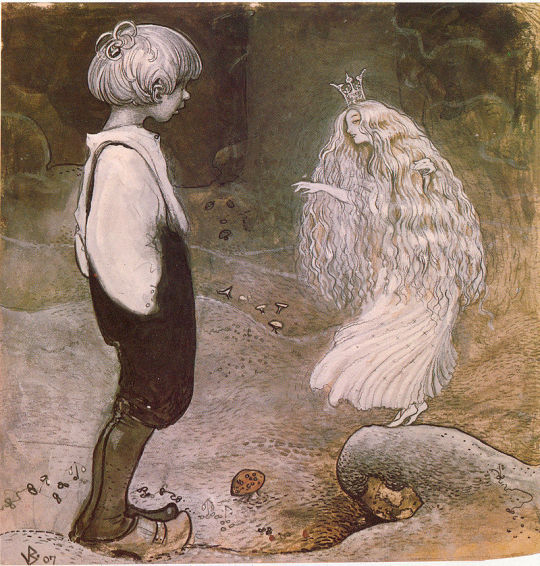
The fairy folk of Elidorus [Welsh mythology, British mythology]
Elidorus is a Welsh folklore character who supposedly lived on the Gower Peninsula. As the story goes, when he was a young lad, Elidorus went to a very strict school where the rules were draconian and the children frequently received beatings. At one point, the boy couldn’t take it anymore and ran away, hiding in a hollow on a riverbank. Elidorus stayed there for several days, wondering what he would do now, when he was found by two peculiar tiny men.
They looked human – except for their diminutive stature – and had fair white skin and very long hair. The two creatures invited him to an amazing country that was filled with delights and sport. Elidorus took their offer and followed his benefactors through a shadowy path into a gorgeous land with meadows, rivers and forests. He did not know where he was, but this strange land was populated with the same tiny creatures as the two who had invited him. Subsequently he was brought before their king, who proceeded to question him.
Eventually, the king had Elidorus brought before his son, who was roughly the same age as the young boy. The two played games together and Elidorus learned a fair bit of the fairies’ language. In this land, the people played a sport with balls made of solid gold. There were also animals here, such as tiny dogs and tiny horses. The tiny people seemed to live mainly on a diet of milk and never consumed fish or meat. They had no churches or similar institutions, rather they were devoted to the very concept of truth. In fact, this devotion was a very important aspect of their society: the fairies absolutely detested lies.
But they weren’t confined to their hidden land, for sometimes the fairies would come into our world (it is often assumed that they visited human markets to partake of our goods and products). Elidorus, too, often returned to Wales (sometimes through the same path he had used to enter the land for the first time, but he also found other paths), where he could share his story with his family. And so he told them about the strange country, the tiny people and the sport with the golden balls. But upon hearing her son’s tale, his mother grew greedy. ‘The next time you go to this strange land,’ she told Elidorus, ‘you have to steal one of these golden balls, for it would make a great gift for me.’
Her son was not a bad person, but he did not want to disobey his mother either. And so he complied and stole one of the balls, but his attempt was soon discovered. Elidorus ran away with his prize but was chased by two of the tiny people. He almost made it all the way home, but stumbled and fell just before his house. The two fairies took back the golden ball and mocked the child before returning to their hidden land.
And hidden it would remain, because when Elidorus later tried to go back so he could explain his actions, he failed to find the entrance. And he would never find it again.
Later in his life, Elidorus became a priest. When he was an old man, he told the story of the strange little people to bishop David II (the bishop of Saint David’s at the time. Elidorus remembered a good portion of the language he had learned as a child, and could speak it in front of the bishop. Curiously, the bishop recognized some words of the language, because it shared many similarities with Greek, including several identical words.
Source:
Roberts, T., 1984, Myths and Legends of Wales, Abercastle Publications.
(image source: John Bauer, this illustration is actually unrelated but I rather like it and it fits the story well)
162 notes
·
View notes
Text
I am content in the idea that Goneril, Regan and Cordelia would be mostly naked with Tattoos and Body Paint all over their bodies. Plus, bleached hair.
Also, Necromancy from their grandfather.
#british mythology#goneril#regan#cordelia#geoffrey of monmouth#historia regum britannia#king lear#blaiddyd
1 note
·
View note
Text
May start a chain of reblogs talking about UK mythological creatures.
In Irish mythology there’s a type of faerie called an Alp-luachra or Joint-eater and it’s most commonly depicted as a newt with insect wings. Basically, if you fall asleep next to running water (like a river or a stream), the Alp-luachra will crawl out of the water and into your mouth and start eating your stomach contents until you eventually die of starvation. The only way to prevent this from happening is to eat large amounts of salted meat and wait with your mouth open over running water then the Alp-luachra will crawl out because the salt made it thirsty.
0 notes
Text

Ajax and Cassandra by Solomon Joseph Solomon (1886)
#solomon joseph solomon#art#paintings#fine art#19th century#19th century art#academism#academicism#academic art#painting#english artist#british artist#mythology#greek mythology#trojan war#ajax the lesser#cassandra#greek heroes#classic art
14K notes
·
View notes